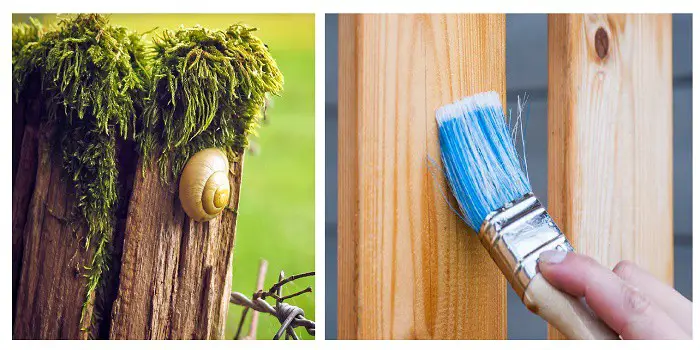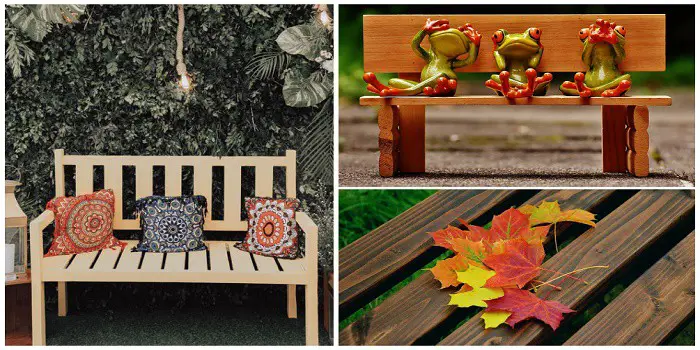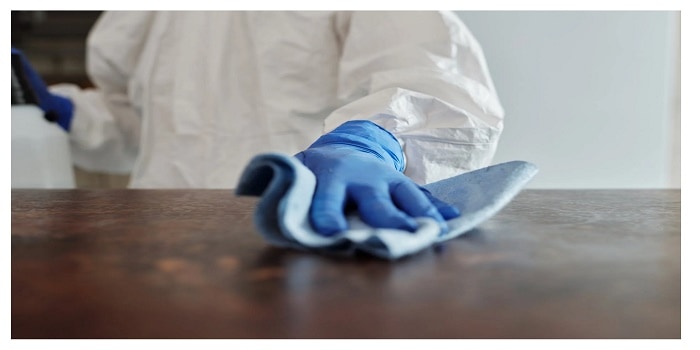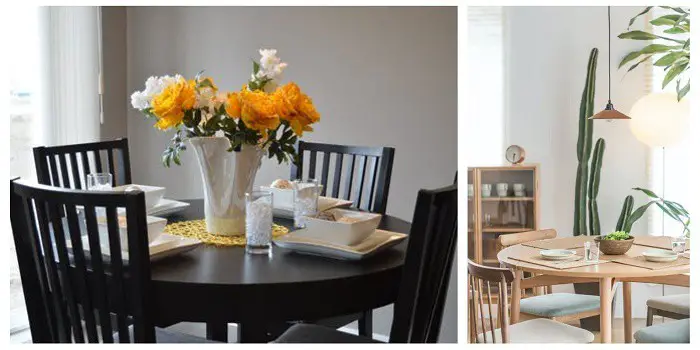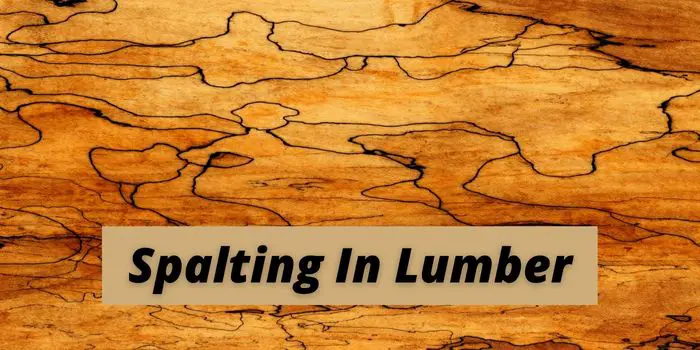
Spalted wood is any kind of lumber that’s been affected and discolored by fungi. During the process, the fungi usually populate and extract the nutrients from the wood, leaving behind dark dotted (or lined patterns) along with soft, punky areas that are unique to each piece of wood.
Spalting affects the weight and strength of wood in particular, which is why it’s not an ideal piece of lumber for construction.
But for crafts, furniture, turning, or other decorative purposes, the patterns can be extremely visually appealing because each piece of beautifully spalted wood is one-of-a-kind.
What Causes Spalting in Wood?
Spalting happens when the conditions are right for fungi to grow on the lumber. The most common type of fungi that causes spalting is called “white rot” decay fungi.
White rot can affect both types of wood, including hardwoods (deciduous) and softwoods (coniferous), but the zone lines are more prevalent in hardwoods such as maple, birch, and beech due to enzymatic differences in white rotting fungi.
Brown rots are, however, more commonly seen on conifers.
Naturally occurring spalting is also most prevalent in dead trees and stressed timber, where heat, moisture, along with fixed levels of nitrogen, oxygen, and natural sugars are present.
The fungi need three things to start the spalting process: oxygen, water, and a food source (wood).
Once the fungi colonize the wood, they’ll start to break down the cellulose and lignin that make up the wood’s cell walls.
This process discolors the wood and changes its properties, making it weaker and lighter.
The wood spalting process usually takes several weeks to months. But the time it takes for a fungus to colonize different wood species will vary depending on the type of fungus.
Is Spalted Wood Dangerous to Use?
Spalting and the fungi that cause the spalting is not always harmful. At the very least, they are less damaging than the wood and wood dust from which they come.
You need to remember is some woods are more hazardous than others, and it’s good to treat the spalted wood accordingly.
While it’s not an issue if you plan to use the spalted woof to make furniture, the untreated wood can be harmful if you use it in the kitchen around the food, like for making cutting boards, bowls, and spoons.
The way to avoid any issues is to sand the spalted wood to remove any harmful bacteria that might be present and then treat it with a non-toxic food-safe finish such as shellac.
Can You Prevent the Wood from Spalting?
While spalted wood may be more aesthetically pleasing to some, it can sometimes make the lumber more difficult to work with.
The spalting process also weakens the wood, which makes using tools like a sander, chisel, or saw more difficult.
Unfortunately, once spalting has started, it’s difficult to remove it completely. But it is possible to treat and stabilize the spalted wood, which will prevent further growth of fungi.
You can slow down the spalting process by keeping the wood in a freezer or in a cool, dry, low-humidity environment.
You can also seal and coat the wood with a protective polyurethane sealant, shellac any other oil-based varnish, which will provide the wood a rich, warmer, and amber look.
For a lighter color finish, I would prefer to coat the spalted wood with a lacquer or water-based varnish.
Avoid using mineral oil or boiled linseed oil on spalted wood because these oils may not get absorbed into the wood completely (due to the density and hardness of spalted wood) and can go rancid over time.
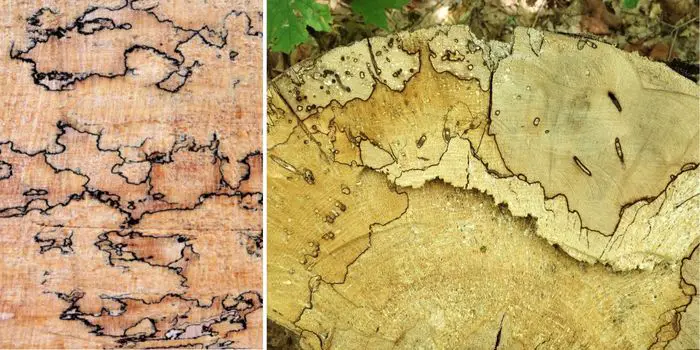
What Can You Do with Spalted Wood – Harness the Power of Spalting
Spalting, while prized and desired by many woodworkers, designers, and architects in countries like the U.S. and the U.K., it’s a type of decay that has the potential to damage the structural integrity of the wood.
If you want to create stunning patterns in your woodworking projects, spalting is a great way to do it. The good thing is you can make the spalted wood in your workshop a DIY way if you are a bit passionate and skilled.
Colin from WoodWorkWeb has explained this beautifully in his video here, so make sure you check that out.
While making spalted wood is the more common way, it’s not the only way. You can also find spalted wood for sale online or find the naturally spalted wood yourself in the woods.
Colin again has a video for this here to get you started.
Once you have your hands on some unique spalted wood, you can use it for a number of woodworking projects:
- Cutting boards and table tops
- Wood guitars and other coveted instruments
- Wood vases, jewelry, bowls, utensils, urns, and pens
Spalted wood is a favorite among woodturners and other lathe users who create stunning designs and pieces.
Not only limited to turning on wood and metal lathes, though, because you can also use spalted wood that is not very beautiful on the backside of a dresser, bed, underside table, or furniture where it isn’t highly visible.
FAQs
What is spalted maple worth?
Spalted woods such as maple, oak, and birch are valuable simply because they are so scarce. A 4/4 spalted maple, for example, can cost anywhere from $8 to $12 per BF (board foot), depending on the uniqueness and design.
Prices for larger boards can get even more expensive due to the difficulty in finding large, clear pieces of spalted wood.
To find spalted wood with unique valuable patterns, you might have to search online or visit some high-end furniture stores, but the effort will be worth it in the end.
If you already have spalted wood and are interested in selling it – the key is to find a buyer who is willing to pay for the uniqueness and artistry of the wood.
How can you tell if the wood is spalted?
Spalting is a process that changes the color of the wood and creates unique patterns. So, the first sign of spalting is usually a change in color. The wood may also have dark lines or streaks running through it, and the grain may be wavy or distorted.
Spalted wood is also often softer than non-spalted wood, so it’s easy to dent or chip a punk wood.
To be sure, you can always ask a professional or take a sample of the wood to a local sawmill or woodworking store for identification.
How can you spalt wood yourself at home?
While it’s nowhere near to a naturally found expensive piece of spalted wood, you can create your own DIY versions at home by creating the right conditions.
Here’s a quick guide to how you can do that:
- Soak the wood in water for 24-48 hours to make it easier to work with.
- After soaking, score the wood with a sharp knife to create cracks or fissures.
- The wood should be damp but not wet when you do this.
- Place the wood in a container with a lid or a plastic bag
- Take some small pieces of fungi and place them on the wood
- Leave it in a warm, dark place for 6-8 weeks
Sara Robinson at fine woodworking suggests creating an environment with around 80% humidity and 80ºF temperature without sealing the bag or container because the fungi will require oxygen for the spalting process.
Once the wood has started to change color and develop patterns, remove it from the container and allow it to dry completely. You can then sand it, finish it, or use it as-is for your projects.
Final Thoughts
Spalted wood is a beautiful, unique, and often expensive type of wood that’s perfect for woodworking projects big and small.
While you can find naturally spalted wood for sale online or at high-end furniture stores, you can also create your own DIY versions at home with some patience.
This is, however, not the same as the expensive, rare, and unique spalted wood.
Whether you’re a beginner or an experienced woodworker, experimenting with spalted wood is a fun way to add some interest and variety to your projects.
Share the post "What is Spalting in Lumber – Causes & Prevention Tips"

Hi, I am Mark Garner a professional carpenter, woodworker, and DIY painter. I live in the small city of Peoria, Arizona as a semi-retired woodworker. I have started this blog with a simple motive to help you with my wood experience in this sector. If you like to know more about what I love doing and how it all got started, you can check more about me here.

